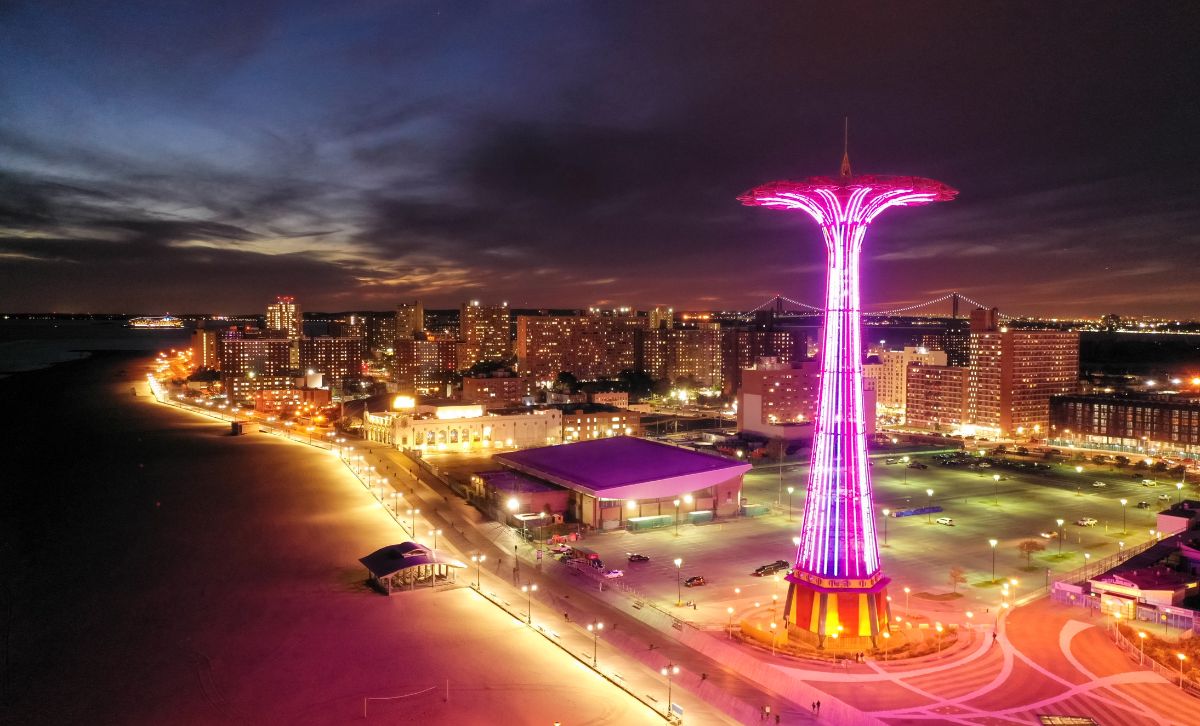

5 Fix-and-Flip Lessons from the Coney Island Redevelopment Plan

For a long time, Coney Island was an iconic part of summers in New York. Generations were charmed by the rollercoasters, boardwalk games, and world-famous hot dogs, but sadly the area fell into neglect. Aging infrastructure, economic decline, and buildings falling into disrepair made for a sad sight, while the untapped potential was obvious to developers.
In 2009, a historic rezoning put efforts in motion to transform Coney Island into a thriving, modern neighborhood with more housing and job opportunities for locals. All while preserving the famous Coney Island rides for future generations of New Yorkers.
This ambitious project is changing the face of Brooklyn’s beachfront, and there are lots of key lessons that real estate investors of all experience levels can take away.
What is the Coney Island redevelopment plan?
The Coney Island redevelopment plan is a multi-phase initiative aimed at revitalizing Brooklyn’s iconic beachfront.
Now 15 years into action, the plan has already resulted in over 50 blocks of infrastructure improvements, thousands of new housing units added to the real estate market, and a multi-use development designed to help formerly homeless veterans. The plan is still underway, with 500k square feet of new commercial space planned.
Spearheaded by city planners, community leaders, and private developers, the plan aims to maintain the beachfront’s historic value while creating a vibrant, year-round community that caters to both native Coney Islanders and tourists.
In short, the redevelopment is already redefining Coney Island as a destination for the future while honoring its storied past.
5 Key lessons from the Coney Island redevelopment plan
Whether you’re a seasoned flipper or a first-time fixer-upper, the principles behind the Coney Island revitalization can offer valuable lessons for your next fix-and-flip project.
1. Vision drives value
The Coney Island plan started with a bold vision: to enhance the area’s historic charm while adding contemporary appeal. As a fix-and-flip real estate investor, it’s just as crucial to have a clear vision for your project. Think about what makes your property unique and how you can enhance its character to attract buyers.
To do: Whether it’s restoring vintage details or modernizing the layout, align every decision with your overarching vision.
Further reading: Need inspiration? Our tips on increasing the value of your fix and flip property should help.
2. It’s all about location
Coney Island has a prime waterfront location, which already plays a big role in attracting visitors and residents. Similarly, the success of your flip can hinge on location. Research the neighborhood’s amenities, schools, and future development plans to understand its full potential.
To do: Highlight the property’s proximity to desirable features in your marketing, and think about making upgrades that cater to the local buyer demographic.
Further reading: As well as researching the local area, follow these 8 tips to evaluate whether a fix and flip property is worth it.
3. Invest in curb appeal
One of the most interesting aspects of the Coney Island redevelopment is how much attention is being paid to aesthetics. From revamped storefronts to inviting public spaces, first impressions matter. For your fix-and-flip, focus on curb appeal to draw in potential buyers.
To do: A fresh coat of paint, updated landscaping, and a welcoming entryway can dramatically increase the perceived value of your property.
Further reading: Find more examples of quick cosmetic enhancements in our article about how to maximize rentability.
4. Blend old and new
Coney Island’s success lies in its ability to honor its history while embracing the future. Iconic landmarks coexist with brand new Coney Island rides, modern attractions, and updated infrastructure. Similarly, blending old and new in your flip can help it appeal to a wider audience once it hits the real estate market.
To do: Preserve original features like hardwood floors and crown molding while adding new touches like energy-efficient appliances and smart home technology.
Further reading: Retaining original features, instead of replacing them, can help to reduce your renovation budget. For other cost-saving ideas, read our tips to maximize your fix and flip profit.
5. Think beyond your property
The Coney Island plan isn’t just about buildings. It’s about creating a holistic experience complete with community spaces, attractions, and improved infrastructure. The end goal is to make the Coney Island neighborhood more livable. In the same vein, think about how your property fits into the larger context of the surrounding area.
To do: Highlight nearby spaces like parks or cafes, and consider small upgrades that enhance lifestyle, such as outdoor seating areas or a finished basement for additional living space.
Further reading: If your property is in a popular area, you might be able to earn more from rental rather than selling. Our article about fix and flip vs. buy and hold should help you weigh the pros and cons.
Coney Island: a masterclass in transformation
No matter how small or large, any real estate investor can learn from the example of Coney Island’s redevelopment. By applying its principles—having a strong vision, emphasizing location, investing in aesthetics, blending tradition with innovation, and considering the broader context—you can maximize the success of your next fix-and-flip project.
With the right approach, your property can become a standout gem in its neighborhood: just like Coney Island has become a revitalized jewel of South Brooklyn.
Make your vision a reality with Express Capital Financing
Transforming an unloved property into a market-ready masterpiece requires both creativity and financial resources. Partnering with a hard money lender like Express Capital Financing gives you the flexibility and funding you need to bring your vision to life.
Hard money loans are well-suited for fix-and-flip projects, giving investors quick access to capital and bridging any financing gaps. Whether you’re tackling a historic restoration or adding modern amenities, a fix-and-flip loan from Express Capital Financing can help your flip move quickly and efficiently.
Start your next project with confidence, knowing you have the financial support to turn your vision into success. Apply today.



Comments